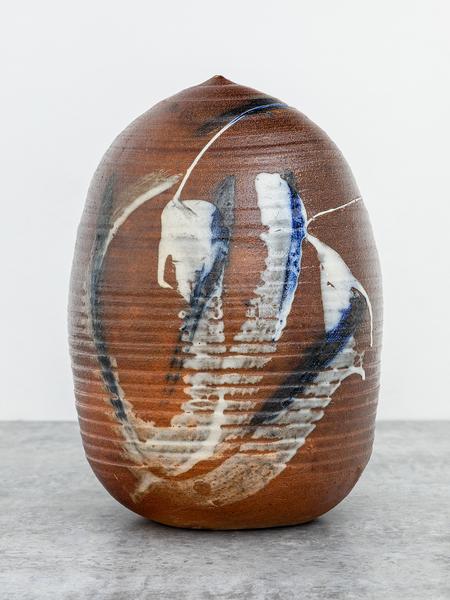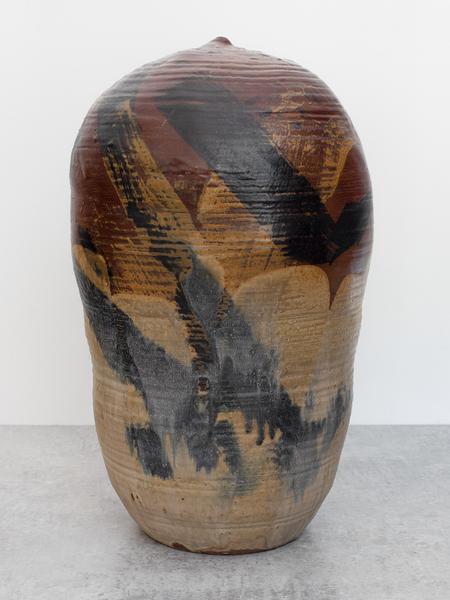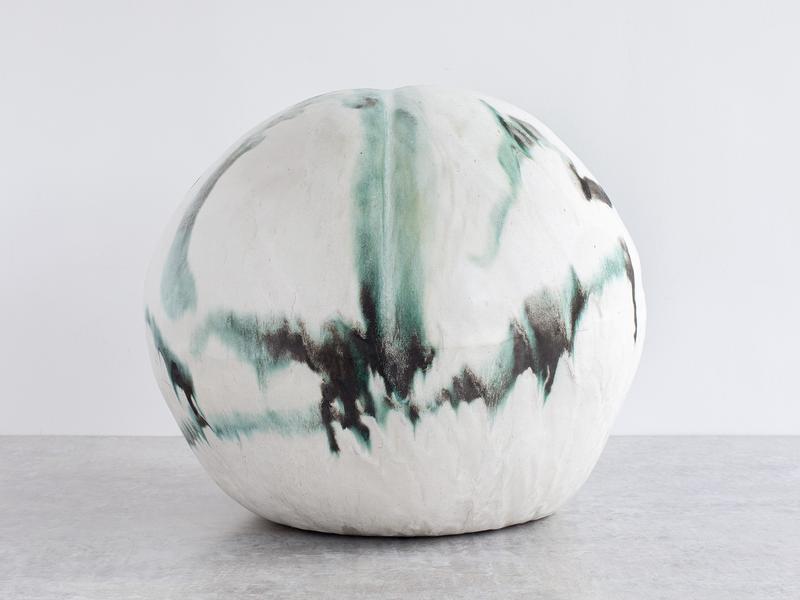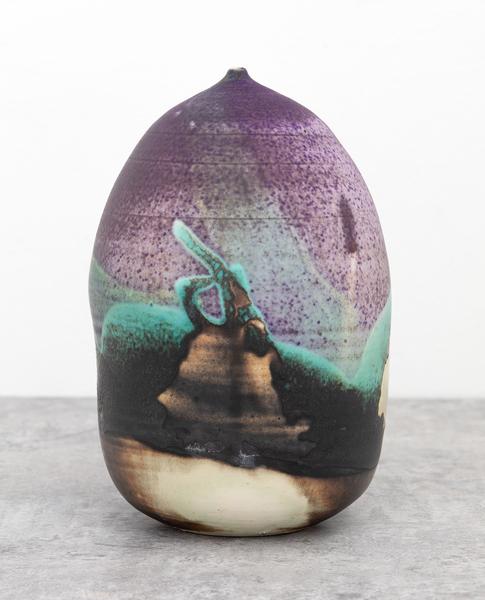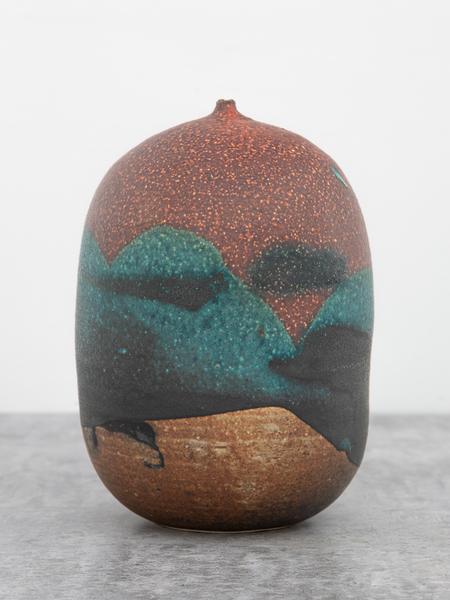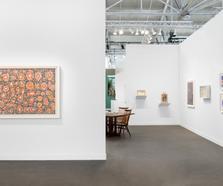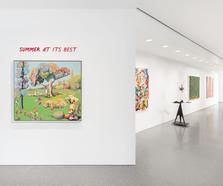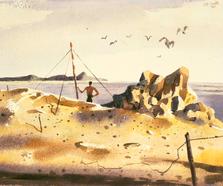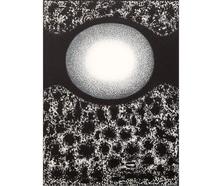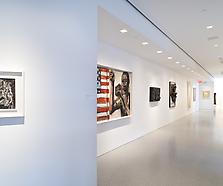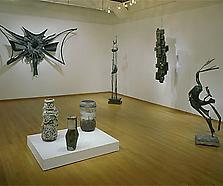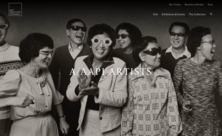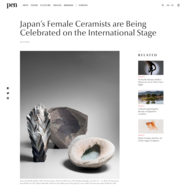“In my life, I see no difference between making pots, cooking, and growing vegetables. They are all related. However, there is a need for me to work in clay. It is so gratifying, and I get so much joy from it, and it gives me many answers for my life.”
Among the preeminent ceramicists of the past century, Toshiko Takaezu (1922-2011) is celebrated for her expressionist ceramics that drew inspiration from the volcanic landscape of her native Hawaii, the philosophies of Zen Buddhism, and abstract expressionism. Takaezu was one of eleven children born to Japanese immigrant parents in Pepeekeo, Hawaii, a small rural community on the east side of the “Big Island.” Her parents were from Okinawa and raised their children in a traditional Japanese home, with her father working as a farmer and laborer; Takaezu referred to herself the “navel child” of her family, as she had five older and five younger siblings. In 1940 she dropped out of high school to work at the Hawaii Potter’s Guild, a commercial ceramic studio in Honolulu, where she acquired a foundational knowledge of ceramic processes, materials and techniques. Takaezu’s formal ceramic education began in 1944, when she began taking pottery lessons led by an officer in the US Army Special Services division who was stationed in Hawaii to perform topographical research; the officer encouraged Takaezu to pursue her creative interests while taking her openings, plays, and concerts to expose her to other artistic disciplines.
In 1945 Takaezu left the Potter’s Guild to work at a ceramic production facility located in a woodworking mill, where learned molded production ware and glaze chemistry techniques. There she met the ceramicist and sculptor Claude Horan, who became a highly influential mentor to the young artist. Feeling the need for a greater creative outlet, Takaezu began taking painting and drawing classes at the Honolulu Art School in 1947, where Precisionist painter Ralston Crawford was one of her instructors. The following year she enrolled at the University of Hawaii to study under Horan, who had recently taken a faculty position there. Studying at UH from 1947–1951, Takaezu also took design and weaving classes while developing her ceramic practice, exhibiting her pottery for the first time at the prestigious Ceramic Nationals exhibition at the Everson Museum of Art in Syracuse, NY, in 1949. It was in these years that the artist developed her earliest examples of closed-form ceramics, which grew out of Horan’s approach to similar bottle forms.
In 1951 Takaezu relocated to Bloomfield Hills, Michigan, to attend the Cranbrook Academy of Art, where she studied under Maija Grotell, a Finnish-American ceramicist whose work inspired Takaezu’s interest in the school. Acclaimed for her artistic philosophy, which advanced the idea that ceramics could be a fine art akin to sculpture, Grotell emphasized self-discovery and an embrace of individuality in her teachings; Grotell became a formative mentor for Takaezu, not only in the development of her practice, but also in her own approach to teaching, an endeavor Takaezu would pursue later in life. In 1955, Takaezu traveled to Japan for the first time to glean a deeper understanding of the nation’s culture and connect with her heritage. The young artist spent eight months there, studying traditional and contemporary ceramic techniques, the tea ceremony, and Zen Buddhism.
She also met leading ceramicists Toyo Kaneshige and Yagi Kazuo, the latter of whom, like Grotell, focused on nonfunctional vessels and sought to elevate ceramics to the realm of sculpture. Takaezu’s experiences in Japan were

